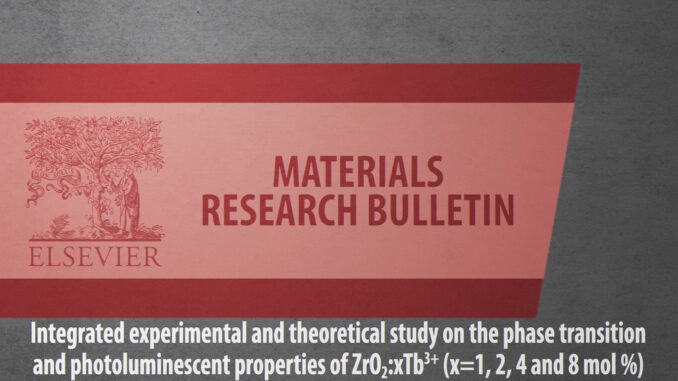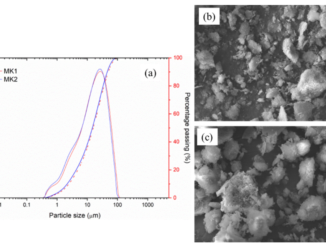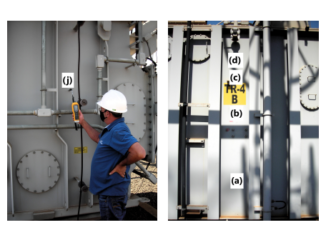
Integrated experimental and theoretical study on the phase transition and photoluminescent properties of ZrO2:xTb3+ (x=1, 2, 4 and 8 mol %)
Abstract: Zirconia (ZrO2) has been intensively studied as an important ceramic material, and numerous technological applications have been found. The present work deals with synthesizing and characterizing the phase transition (cubic vs tetragonal) and photoluminescence emissions of ZrO2:xTb3+ (x = 1,2,4 and 8 mol%). The samples formed by the complex polymerization were thoroughly characterized for physicochemical properties such powder by X-ray diffraction (XRD), and Raman and diffuse reflectance spectroscopies. First-principle calculations at the density functional theory level were performed to complement and rationalize the experimental results. An energy transfer mechanism which promoted the f-f transitions and emitted strong characteristic emissions of Tb3+ is discussed in detail. A ZrO2 lattice acts as an effective sensitizer and the green light emission and the color purity were controlled by the concentration of the Tb3+ cations. Moreover, this study enables us to construct a more consistent picture of the doping process of Tb3+ in ZrO2 and provides a new approach for fabricating a multifunctional material and prospective application in lighting devices.
Author(s): Lovisa, L. X.; Gomes, E. O.; Gracia, L.; Santiago, A. A. G.; Li, M. S.; Andres, J.; Longo, E.; Bomio, M. R. D.; Motta, F. V.
Materials Research Bulletin
Published: January 2022, Volume 145, 111532
DOI: https://doi.org/10.1016/j.materresbull.2021.111532
CDMF
The CDMF, hosted at the Federal University of São Carlos (UFSCar), is one of the Research, Innovation and Dissemination Centers (RIDC) supported by the São Paulo State Research Support Foundation (Fapesp), and also receives investment from the National Council Scientific and Technological Development (CNPq), from the National Institute of Science and Technology of Materials in Nanotechnology (INCTMN).




